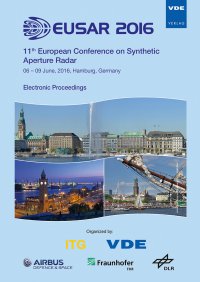Demonstration of the Applicability of 2-Look Burst Modes in Non-Stationary Scenarios with TerraSAR-X
Konferenz: EUSAR 2016 - 11th European Conference on Synthetic Aperture Radar
06.06.2016 - 09.06.2016 in Hamburg, Germany
Tagungsband: EUSAR 2016
Seiten: 6Sprache: EnglischTyp: PDF
Persönliche VDE-Mitglieder erhalten auf diesen Artikel 10% Rabatt
Autoren:
Prats-Iraola, Pau; Yague-Martinez, Nestor; Wollstadt, Steffen; Kraus, Thomas; Scheiber, Rolf (German Aerospace Center (DLR), Germany)
Inhalt:
Burst-mode interferograms result in phase jumps between bursts in the presence of azimuthal motion. Such jumps occur due to the sudden change in the line-of-sight (LOS) vector (or, equivalently, the Doppler centroid) between consecutive bursts as a consequence of the burst mode operation. While the phase jumps might look like a nuisance, they are indeed the result of a legitimate measurement, namely, the azimuthal motion projected into the LOS vector. The phase jumps might complicate the phase unwrapping process and the exploitation and interpretation of the differential phase. While it is not always possible to handle the phase jumps with 1-look data, the use of 2-look acquisitions can considerably help in the proper decoupling of the range and azimuthal components of the motion. This paper presents the rationale to exploit 2-look data for that purpose. Data acquired with TerraSAR-X over the Petermann glacier in 2-look TOPS and ScanSAR modes are used to demonstrate the applicability of the approach, which is very useful in non-stationary scenes like glaciers or earthquakes.


